This insightful approach has led not only to the highly-publicized opening of the�Louvre Abu Dhabi�last November, but now also to two high-profile initiatives in Iran. The first of these is a major loan exhibition in Tehran (on view until June 8),�Treasures from the French National Collections, billed as the first ever large-scale exhibition by a major Western museum in Iran.
[caption id="" align="aligncenter" width="940"]
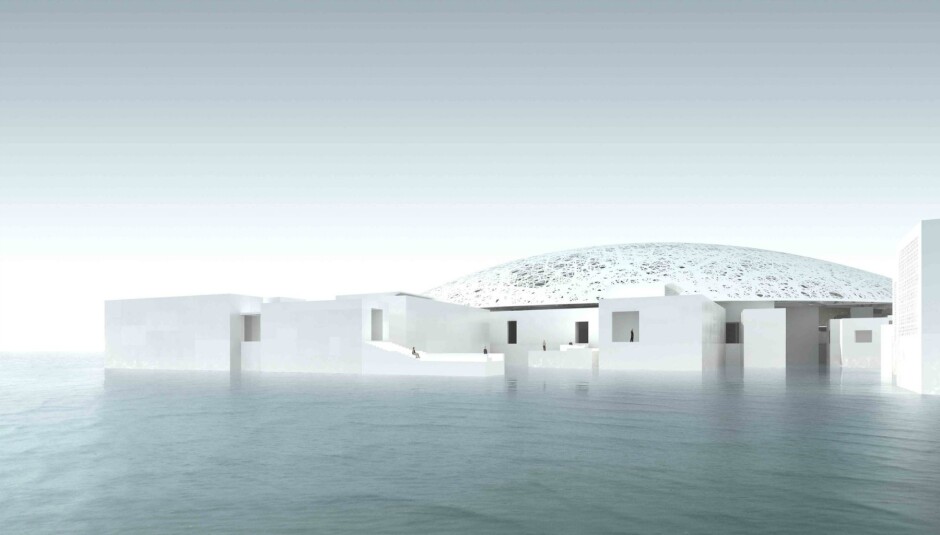 LOUVRE ABU DHABI, UNITED ARAB EMIRATES[/caption]
LOUVRE ABU DHABI, UNITED ARAB EMIRATES[/caption]2018 marks the 80th�anniversary of the National Museum of Iran. Andre Godard, who also spearheaded the Louvre Abu Dhabi�s opening festivities, has orchestrated several celebratory events of which this loan exhibition is a highlight. Bringing together more than 50 works, the show proudly features, according to formal announcements, the �richness of the legacy of different civilizations and periods, bearing witness to the universal genius of the human race.� Amongst other masterpieces will be a 2,400-year-old Egyptian sphinx, a bust of the Roman Emperor Marcus Aurelius, Old Master drawings by Rembrandt and Delacroix, as well as Iranian artefacts.
[caption id="" align="aligncenter" width="940"]
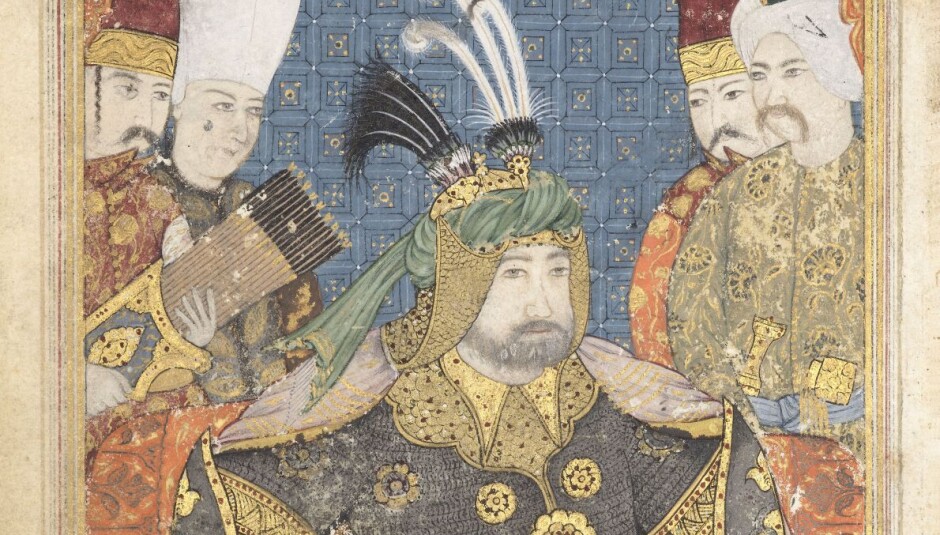 POSTHUMOUS PORTRAIT OF SULTAN MUSTAFA II (Detail) OTTOMAN EMPIRE, 18TH CENTURY (DETAIL) � Mus�e du Louvre, dist. RMN - Grand Palais[/caption]
POSTHUMOUS PORTRAIT OF SULTAN MUSTAFA II (Detail) OTTOMAN EMPIRE, 18TH CENTURY (DETAIL) � Mus�e du Louvre, dist. RMN - Grand Palais[/caption]The timing of the opening was interesting. As�The Guardian�explained, the show was �curated to showcase works tracing the creation of the Louvre, from its founding in 1793 to date, the show came a day after the French foreign minister Yves Le Drian, arrived in Tehran both to open the exhibition and put pressure on officials over their missile programmes.� This mixed messaging led to a degree of local controversy, but cultural imperatives seem to have overridden the political ones.
Hailed as an �outstanding cultural and diplomatic event� the show has strengthened ties forged through France�s recent economic deals with Iran. While Total and Renault (two of those figuring in the deals) are the exhibition�s primary sponsors, the Iranian diaspora has also shown considerable support through the Iran Heritage Foundation, the country�s leading NGO. This comes as no surprise; Iran and France have enjoyed a longstanding, shared cultural history dating back to French presence in the country for archaeological purposes in the 1880s. The Dieulafoy legacy and writings still remain a key source of reference for Iranologists of that period, and the Louvre�s own holdings of Perso-Islamic artefacts are some of the most significant in the world.
[caption id="" align="aligncenter" width="940"]
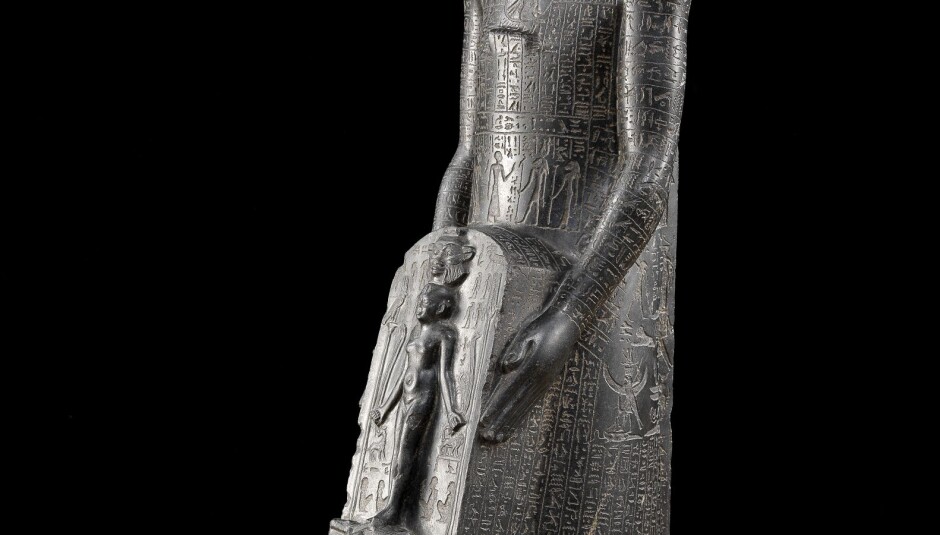 RED STATUE DE PADIMAHES PORTANT UNE ST�LE D'HORUS, STATUE GU�RISSEURE. (DETAIL) � Mus�e du Louvre, dist. RMN - Grand Palais[/caption]
RED STATUE DE PADIMAHES PORTANT UNE ST�LE D'HORUS, STATUE GU�RISSEURE. (DETAIL) � Mus�e du Louvre, dist. RMN - Grand Palais[/caption]Parallel to the opening in Tehran, the Louvre-Lens Museum is debuting �The Rose Empire: Masterpieces of 19th�Century Persian Art�, with scenography by celebrated fashion designer Christian Lacroix. Here, the Rose Empire is a reverential nod to a culture that gave birth to the poet Saadi�s metaphoric �Gulistan�, a �rose garden� of poems and stories. This first-ever retrospective is dedicated to the magnificent art of the Qajar Dynasty - sovereigns who ruled Iran from 1786 to 1925 � the cusp of the modern era. The original and surprising art that flourished during this period was particularly rich and fertile, mostly as a result of court patronage. It is surveyed through an impressive gathering of over 400 works from a wide reach of private and public collections throughout the world.
[caption id="" align="aligncenter" width="940"]
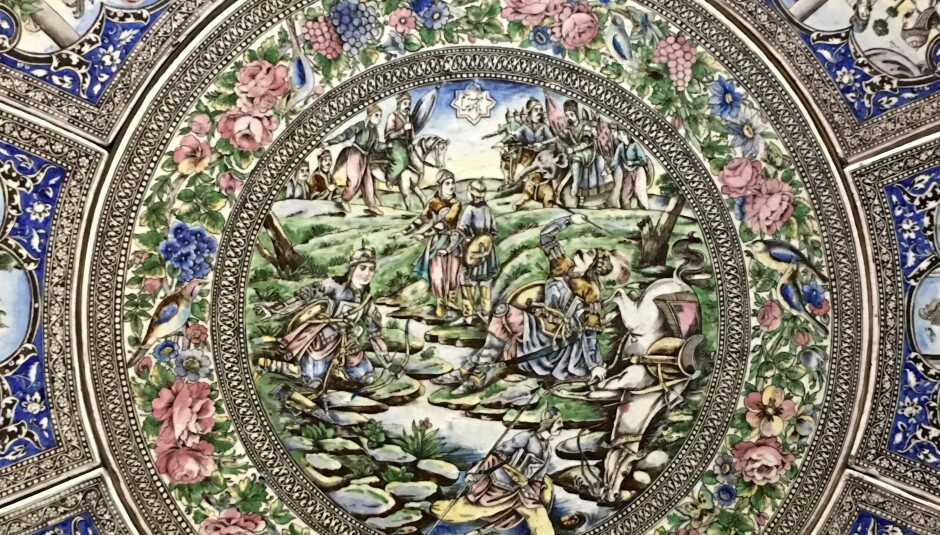 QAJAR TABLETOP[/caption]
QAJAR TABLETOP[/caption]This comprehensive and unprecedented overview to the arts of the Qajar Dynasty brings together paintings, drawings, jewelery, enamels, rugs, clothing, photographs and ceremonial weapons, all showcased by Christian Lacroix�s design. Gwenaelle Fellinger from the Department of Islamic Art at the Louvre curates the show, and while Total Foundation has partnered on the project, the key sponsor is the Roshan Cultural Institute, founded by eBay�s Pierre Omidyar and his mother Elahe Omidyar Mir-Djalali. It is an inherently international and cross-cultural collaboration, a wonderful complement to the concurrent exhibition in Tehran.
[caption id="" align="aligncenter" width="940"]
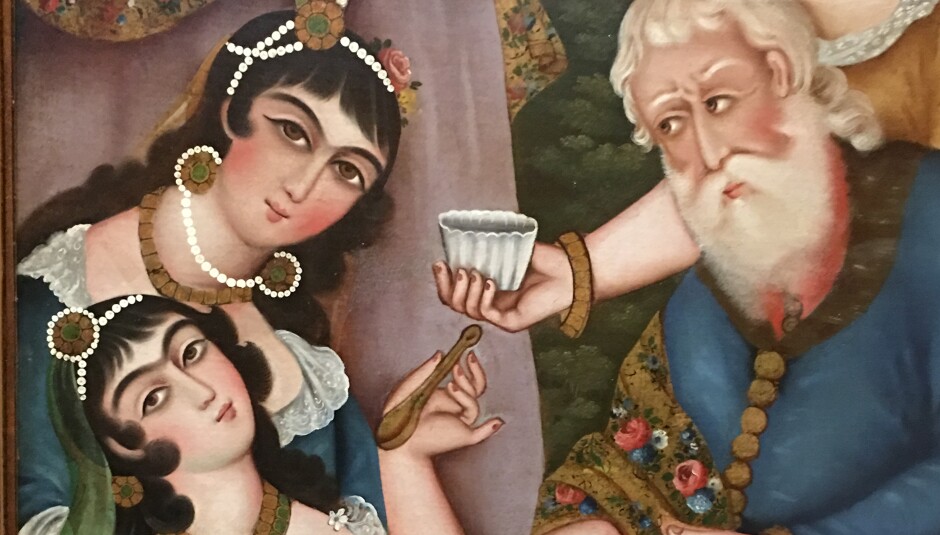 QAJAR PAINTING, THE LEGEND OF SHEIKH SANAN, THE CHRISTIAN MAIDEN FAINTING[/caption]
QAJAR PAINTING, THE LEGEND OF SHEIKH SANAN, THE CHRISTIAN MAIDEN FAINTING[/caption]Those who have been to Iran will know that the magnificent Golestan Palace and its Hall of Mirrors was the original palace of the Qajar monarchs and that today it remains a central part of Iran�s regal and lyrical imagery. Introducing it to an international public will be a major service to the arts of that period. Small wonder that history-enthusiast Lacroix has fashioned the exhibition as a stroll through the rooms of an opulent Qajar Palace.
[caption id="" align="aligncenter" width="940"]
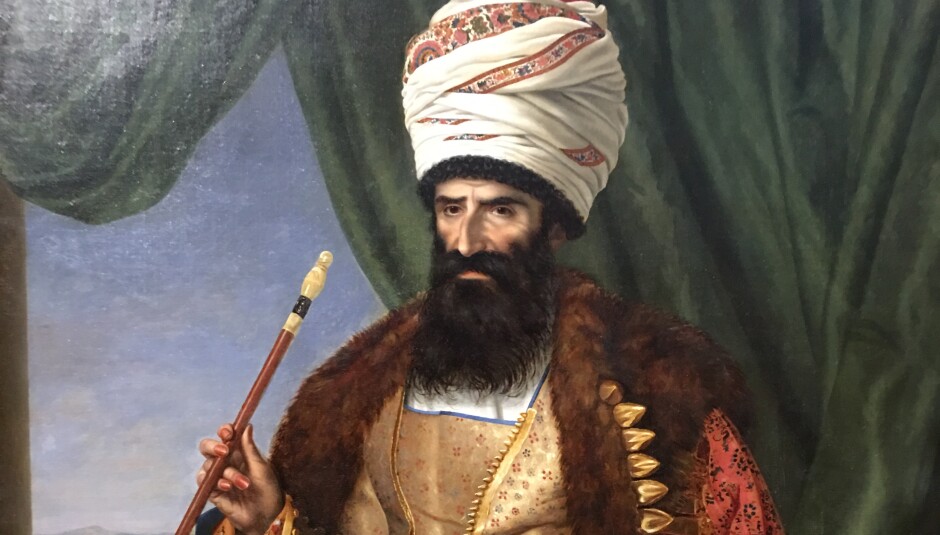 PORTRAIT OF ASKAR KHAN, PERSIAN AMBASSADOR TO FRANCE, c. 1808[/caption]
PORTRAIT OF ASKAR KHAN, PERSIAN AMBASSADOR TO FRANCE, c. 1808[/caption]The Louvre-Lens show on Qajar period works is bound to attract a great deal of attention as the period is by and large unknown to the general public outside of Iran. As a key transitional period, the 18th�and 19th�centuries deserve far greater study and appreciation, particularly as they remain a major point of reference for Islamic scholars and modern and contemporary artists working today. Photography first made its appearance then, with Nasser Al Din Shah himself a fan � a monarch whose visits to the European court brought the beginnings of westernisation to Persia. The sumptuousness of the arts of that period will be an eye-opener, as will the sections of the show that represent the drawings and paintings of travellers Pascal Coste and Jules Laurens.
Meanwhile, it is to be hoped that for those in Iran, the exhibition at the National Museum of Iran will educate and inform in the same way. Transcending the mundane and the confrontational, hopefully in the words of Picasso, we can �wash off the dust of daily life from our souls� and enjoy for some moments the magnificence of the dialogue between these two civilizations.










